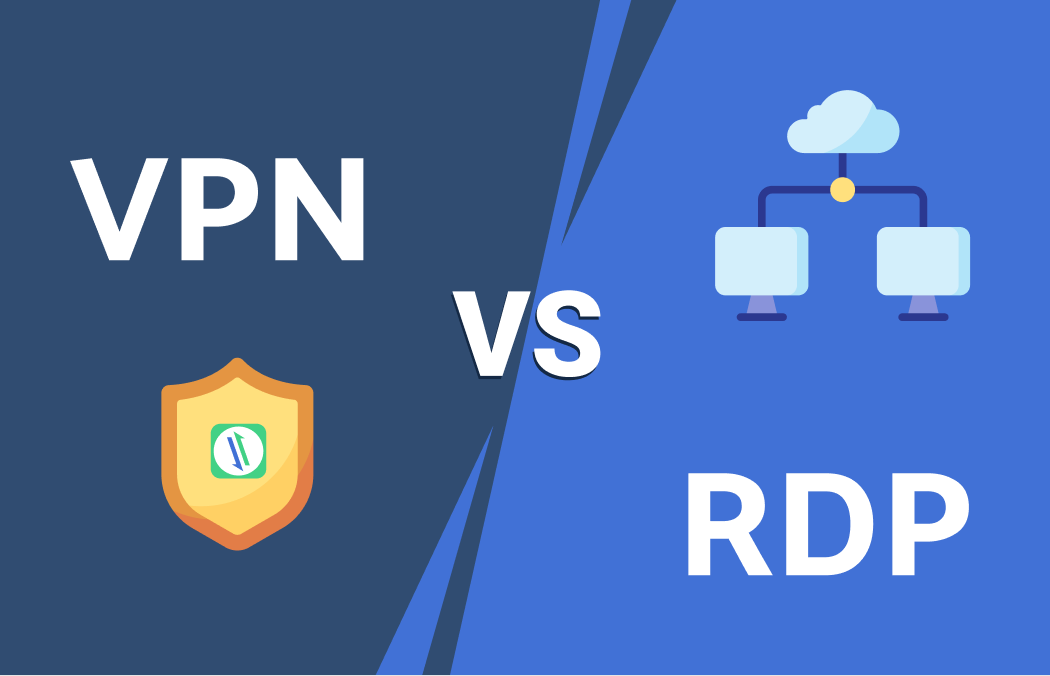VPN Vs. Remote Desktop Protocol
Two tools are often introduced in relation to remote access work, namely VPN and RDP. The former enables you to connect your personal computer to the corporate network of your organization while the latter allows you to control the connected computer even while you are away from home. So, is RDP the same as VPN? Let’s look at the differences between VPN and RDP:
Remote Desktop Software – It may be a new name for VPN, but Remote Desktop is nothing but a software which can be installed on a laptop or any other type of personal computer that supports Windows XP or Vista. With this software, you are able to make use of the remote network offered by your company or an Internet cafe while you are in the office. A lot of companies provide access to the Internet, making it easier for their employees to do their tasks even from their homes. A lot of companies also use remote work to improve the efficiency of their work force. Since employees in remote work centers have more time available for them to complete their tasks, they do not get trapped in the routine tasks any more.
Another thing to note about VPN is that it can hide your IP address. As you know, the IP address of the person using a VPN is different from the one which is shown to the remote desktop protocol. In case of VPN, there will be a single IP address which is used by the client and that is visible to the server from where the client is using the VPN. But in the case of remote access, there will be two IP addresses which will be displayed to the server, allowing both the computer on which the user is working and the remote desktop protocol viewer on another computer that is connected to the Internet.
There are many advantages of using VPN. For example, it can make the data between two computers more secure, since the VPN uses encryption technology to ensure that the data passed between the users is confidential. Furthermore, when the user logs off from the VPN, his/her connection to the remote computer remains confidential. This is important because a lot of businesses today use computers that have a network attached to the Internet for their employees to access the company’s server, applications and other critical systems. Without a proper security system, these employees could easily gain unauthorized access to the company’s confidential data.
Another advantage of VPN is that it allows the user to access a certain device within his local network. Let’s say you want to transfer some files from your laptop to your desktop. You can do this using a remote PC access program such as FileZilla, which allows you to connect to a different computer within your local network and transfer the files from your laptop to the desktop. Even if the laptop has an internal firewall, the connection to the desktop can be compromised since there isn’t a layer of encryption between the laptop and the desktop. With a
VPN, however, a user maintains a secure connection to the remote desktop server.
Another advantage of vpn is that it improves the speed at which two or more computers are connected. This is especially useful for businesses, which need to transfer files to one another in a timely manner. If two or more staff members need to access the same file, then they have to go back to the physical desktop or laptop and retrieve the needed information. By using a remote desktop software program, all the required information is automatically accessible from the public computer. With VPN, the connection between the desktop and the remote location is encrypted and this prevents unauthorized access. Therefore, transferring large files and various other tasks become very fast.

Although VPN can be used to protect your identity as well as your files, there are some disadvantages of using an. One of the biggest disadvantages associated with this type of service is that you can only see the other end of the connection. This means that you are not able to make any modifications or alterations to the data on the other side of the connection. If you want to view files on the secure network, you will have to login to that server and download the required documents. If you want to view the files on the public network, you will have to connect to the local area network and then connect to the remote desktop protocol.
To conclude, both VPN and fast RDP can offer excellent protection to both private and commercial networks. However, the security offered by vpn relies more on the quality of the connection. With a slow or unsecured internet connection, the security offered by vpn is quite weak. If you want complete privacy and security, then better use VPN instead of using remote desktop applications.


